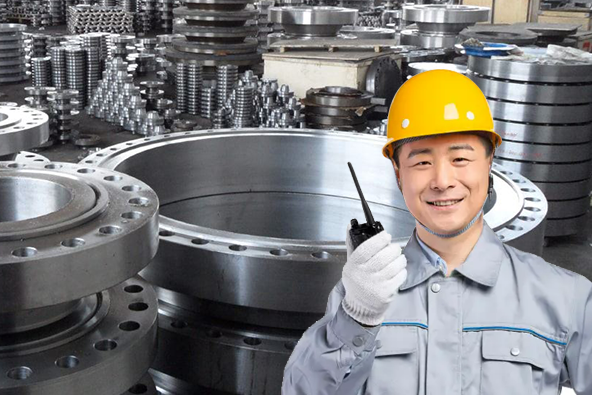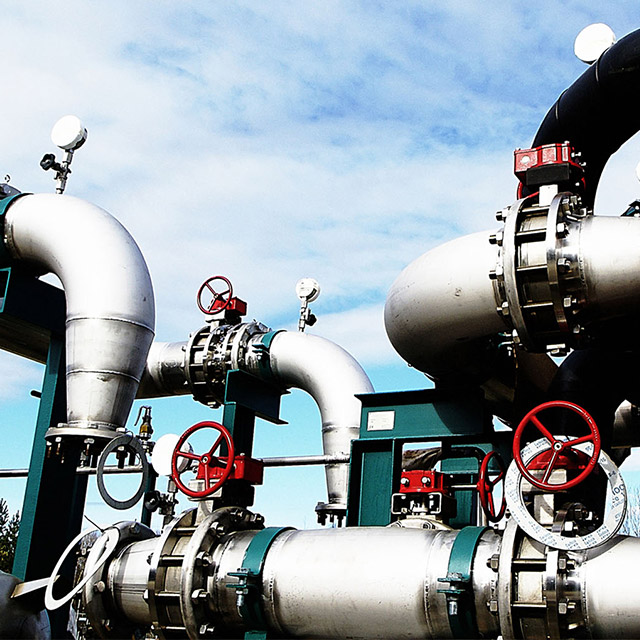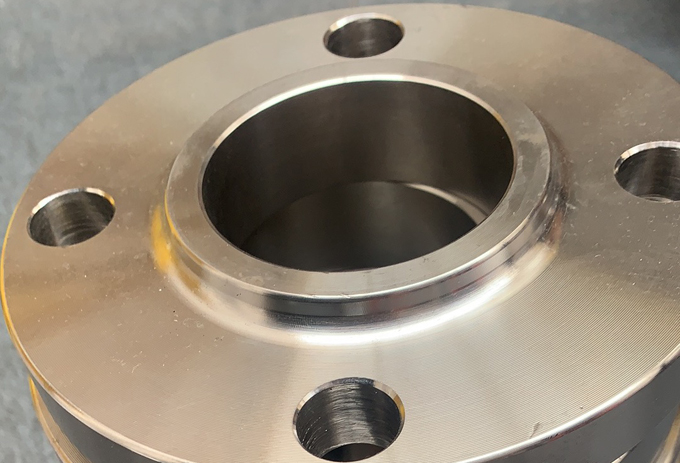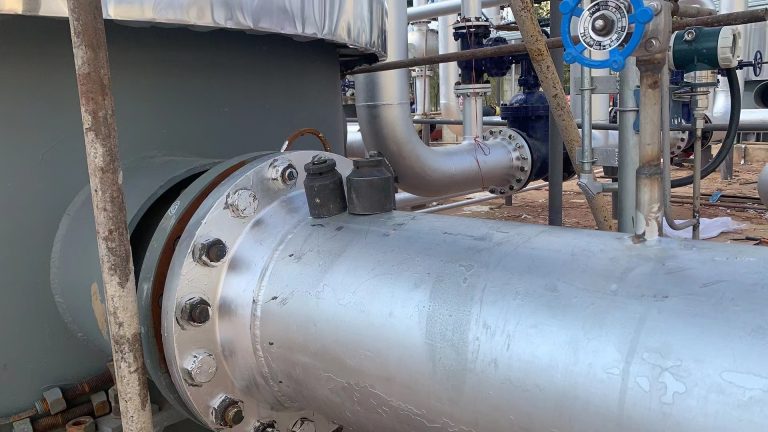When it comes to components in piping systems, flanges are among the most important. Flanges are typically used to connect different sections of pipes and connect them to valves, pumps, and other equipment. Selecting the right flange standard is crucial in order to ensure the safety and efficiency of the system. Different industries and applications require the use of different flange standards, making the selection process quite complex. In this article, we will introduce different types of flange standards, including ANSI/ASME, DIN, JIS, and other standards, discuss their advantages and disadvantages, and emphasize YANHAO’s expertise in producing a wide range of high-quality flange products.

ANSI/ASME Flange Standards
A. Description of ANSI/ASME flange standards:
ANSI/ASME flange standards are widely used in the United States and are known for their versatility in handling a wide range of temperature and pressure specifications. These standards are produced using a series of numbers and letters which represent the pressure rating and material of the flange. ANSI/ASME flanges can be produced in various types including slip-on flanges, weld neck flanges, socket weld flanges, threaded flanges, and blind flanges.
B. Advantages and disadvantages of using ANSI/ASME flanges:
One of the advantages of ANSI/ASME flanges is their versatility and wide availability. They can handle a broad range of temperature and pressure specifications and can be purchased from various sources, making them a desirable option for many industries. However, ANSI/ASME flanges can be expensive compared to other flange standards, especially when dealing with high-pressure or temperature applications.
C. Examples of ANSI/ASME flange products offered by YANHAO:
YANHAO offers a range of ANSI/ASME flange products suitable for various industries and applications. Examples include:
- ANSI/ASME B16.5 Class 600 Slip-on flanges
- ANSI/ASME B16.47 Series A / API 605 Weld neck flanges
- ANSI/ASME B16.47 Series B Blind flanges
- ANSI/ASME B16.36 Orifice flanges.
All of YANHAO’s ANSI/ASME flanges are produced according to strict quality control measures and meet industry standards.
DIN Flange Standards
A. Description of DIN flange standards:
DIN flange standards are widely used in Europe and are known for their precise dimensions and high-quality materials. These standards are produced using a series of numbers that represent the flange type, nominal size, and pressure rating. DIN flanges can be produced in various types including slip-on flanges, weld neck flanges, lap joint flanges, threaded flanges, and blind flanges.
B. Advantages and disadvantages of using DIN flanges:
One of the advantages of using DIN flanges is their precision in dimensions and the use of high-quality materials which ensures reliability and durability. Their uniformity in design also means that they can be easily interchanged with other DIN flanges. However, DIN flanges may not be compatible with other flange standards, which can limit their versatility in certain applications.
C. Examples of DIN flange products offered by YANHAO:
YANHAO offers a range of DIN flange products suitable for various industries and applications. Examples include:
- DIN 2527 PN6-PN100 Weld neck flanges
- DIN 2632 PN10-PN160 Blind flanges
- DIN 2573 PN6 Loose flanges
- DIN 2631 PN6 Socket weld flanges.
All of YANHAO’s DIN flanges are produced according to stringent quality control measures and meet the required industry standards.
JIS Flange Standards
A. Description of JIS flange standards:
JIS flange standards are widely used in Japan and in some parts of Asia. These standards are produced using a series of numbers that represent the nominal size, pressure rating, and flange type. JIS flanges can be produced in various types including slip-on flanges, weld neck flanges, lap joint flanges, threaded flanges, and blind flanges.
B. Advantages and disadvantages of using JIS flanges:
One of the advantages of using JIS flanges is their compatibility with other JIS components, which can simplify the connection process. They are also known for their durability and resistance to corrosion. However, JIS flanges may not be widely available outside of Japan or major Asian markets, which can limit their usage in certain applications.
C. Examples of JIS flange products offered by YANHAO:
YANHAO offers a range of JIS flange products suitable for various industries and applications. Examples include:
- JIS B2220 5K-40K Weld neck flanges
- JIS B2220 5K-40K Slip-on flanges
- JIS F7809 5K-40K Blind flanges
- JIS F7306 5K-16K Threaded flanges.
All of YANHAO’s JIS flanges are produced according to strict quality control measures and meet the required industry standards.
Other Flange Standards
A. Description of other flange standards:
In addition to ANSI/ASME, DIN, and JIS, there are other standards for flanges used in various industries and applications. Some examples include British Standard (BS) flanges, Australian Standard (AS) flanges, and International Organization for Standardization (ISO) flanges.
B. Advantages and disadvantages of using other flange standards:
The advantages and disadvantages of using other flange standards will vary depending on the specific standard being used. However, some general advantages of using other standards may include compatibility with other components within the same standard, as well as the availability of the standard within a particular region. Disadvantages may include limited availability outside of the region where the standard is used, as well as potential differences in specifications and materials used compared to other standards.
C. Examples of other flange products offered by YANHAO:
YANHAO also offers a range of other flange products to meet specific industry or application requirements. Examples include:
- BS4504 PN6-PN40 Slip-on flanges
- AS2129 Table E Slip-on flanges
- ISO 7005-1 PN16-PN40 Blind flanges.
All of YANHAO’s flanges, including those produced using other standards, are tested for quality control and ensure reliability and safety for their intended application.
Factors to Consider When Choosing a Flange Standard
A. Size and pressure rating requirements: It is important to choose a flange standard that meets the size and pressure rating requirements of the specific application. This can affect the safety and reliability of the system and prevent any potential failures or accidents.
B. Material compatibility: The flange material should be compatible with the material of the pipes or equipment it is connecting to in the application. Choosing an incompatible material can lead to corrosion, leaks, and other issues that impact the performance and reliability of the system.
C. Cost considerations: The cost of the flange and its associated components should be considered when choosing a standard. Additionally, the total cost of ownership, including maintenance and repair costs, should be factored in when determining the most cost-effective flange standard.
D. Industry and application-specific requirements: Different industries and applications may have specific requirements for flanges such as material, testing, and certifications. It is important to choose a flange standard that meets all industry and application requirements to ensure safety and compliance.
E. Availability and ease of sourcing: It is important to consider the availability and ease of sourcing flanges for the chosen standard. This could impact production timelines, maintenance schedules, and even replacement part availability.
F. Interchangeability with existing components: When choosing a flange standard, it is important to consider if it is interchangeable with existing components in a system, or if it will require modifications or replacements of other components, which may increase costs and downtime.
G. Regional or global compatibility: Choosing a flange standard that is widely used and recognized globally can help ensure ease of sourcing, compatibility with existing systems, and compliance with international regulations.
H. Regulatory compliance: Flanges used in certain industries may need to meet specific regulatory requirements, such as pressure vessel codes and construction standards. It is important to choose a flange standard that complies with all necessary regulations.
I. Service life and durability requirements: The chosen flange standard should meet the expected service life and durability requirements for the intended application. Factors such as material selection, coatings, and finishes, can impact the longevity and durability of a flange.
J. Environmental factors and corrosion resistance: Flanges used in harsh environments such as offshore or chemical processing should be made of materials that can withstand corrosion and other environmental factors. It is important to choose a flange standard that meets the environmental factors present in the application.
Conclusion
Importance of selecting the right flange standard for your project: Selecting the right flange standard for your project is essential to ensure the safety, reliability, and efficiency of the system. Factors such as size, pressure rating, material compatibility, industry requirements, and cost considerations should be carefully evaluated to determine the ideal flange standard for your project.
YANHAO’s expertise in producing a wide range of flange products: YANHAO has extensive experience in producing a wide range of flange products to meet diverse industry and application needs. By offering flanges for various standards, materials, sizes, and pressure ratings, YANHAO can help customers identify the perfect flange solution to optimize their systems.
Call to action for choosing YANHAO as your go-to source for flange products: If you are looking for high-quality flange products that meet the requirements of your project, YANHAO is the right choice. With industry-proven expertise and a strong focus on quality and safety, YANHAO is committed to providing customers with the right flanges for their specific needs. Contact YANHAO today to learn more about our products and services.
Lewis Liu
Hello, I am Lewis Liu, a professional sales engineer with over ten years of experience in the flange fittings industry. I am highly knowledgeable in flange selection, installation, and maintenance. I am passionate about providing customers with the best solutions to ensure their pipeline systems run smoothly, safely, and reliably.
If you have any questions or concerns regarding flange fittings for your pipelines, whether it’s about selection, material choice, specification requirements, or any other aspect, please feel free to contact me at any time. I am committed to offering professional advice and assistance to help you make informed decisions and meet your needs.




